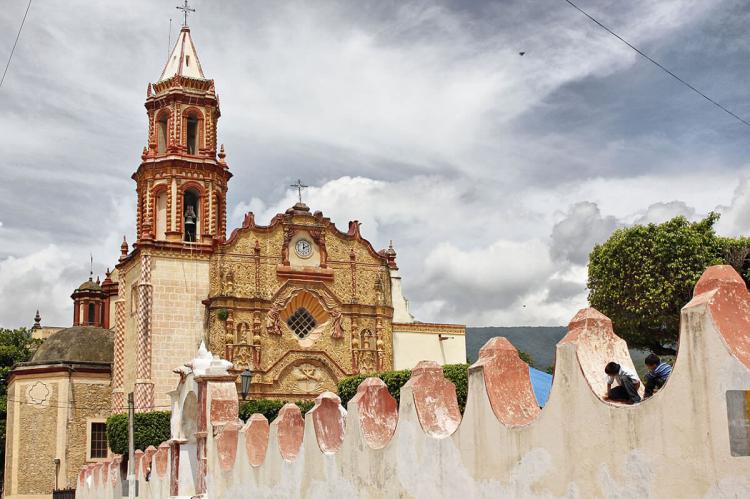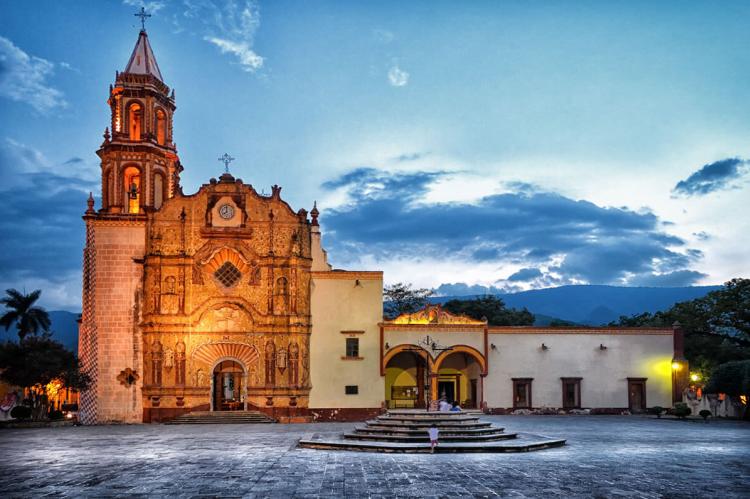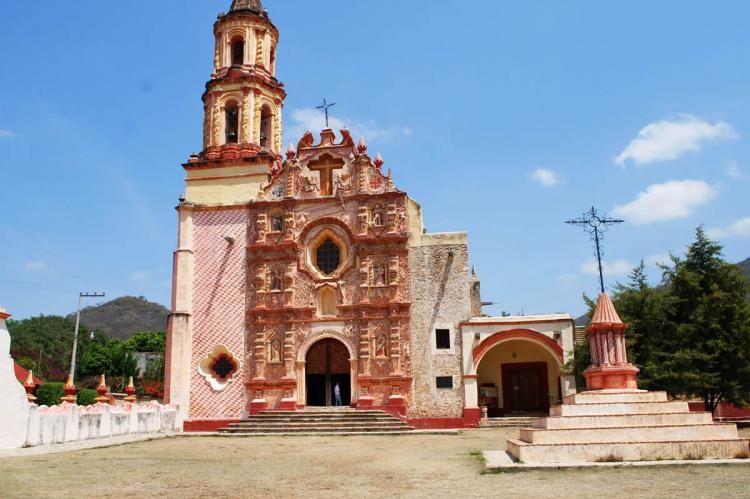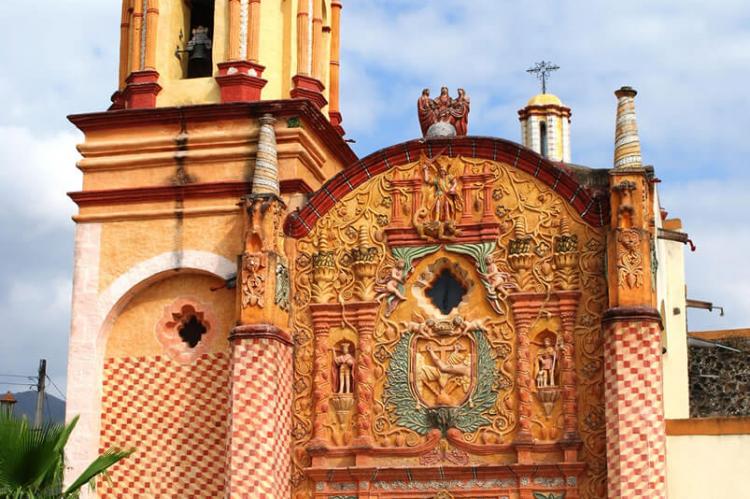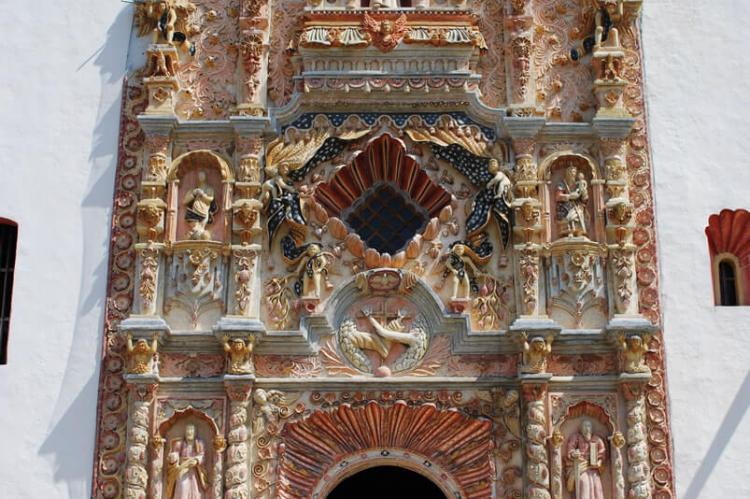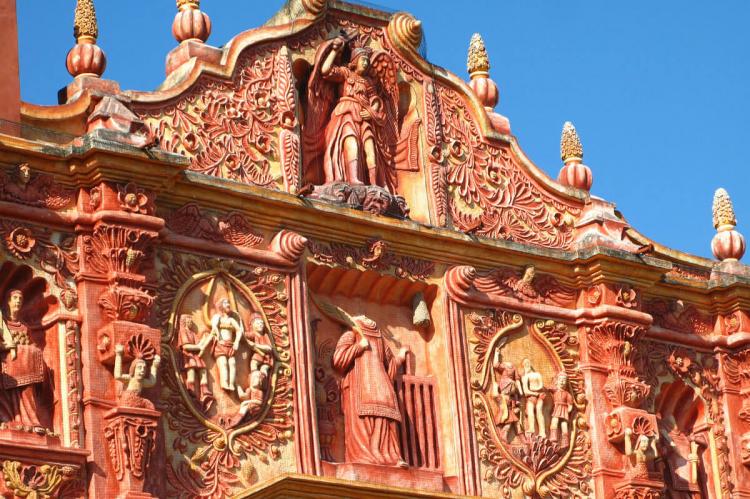Franciscan Missions in the Sierra Gorda of Querétaro (Mexico)
The five Franciscan missions of Sierra Gorda were built during the last phase of the conversion to Christianity in the interior of Mexico in the mid-18th century. The richly decorated church facades represent the joint creative efforts of the missionaries and the indigenous people of the Americas.
Franciscan Missions in the Sierra Gorda of Queretaro
The Franciscan Missions in the Sierra Gorda of Queretaro comprise five missions built in the 18th century during the last phase of the evangelization of the interior of Mexico. They are credited to Junípero Serra of the Franciscan Order, who founded important missions in Baja California and Alta California.
The five missions of this UNESCO World Heritage Site are located in the mountainous Sierra Gorda region in central Mexico.
-
Santiago de Jalpan (the earliest, built 1751-58) and Nuestra Señora de la Luz de Tancoyol are located in the municipality of Jalpan de Sierra.
-
Santa Maria del Agua de Landa and San Francisco del Valle de Tilaco are in the municipality of Landa de Matamoros.
-
The mission of San Miguel Concá is in the municipality of Arroyo Seco.
They witnessed the cultural coexistence between different social groups and their environment and became an important reference for continuing the evangelization and colonization of California, Arizona, and Texas.
The missions, particularly the churches' richly decorated facades, manifest the missionaries' and existing indigenous groups' joint creative efforts, resulting in an exchange of values and influences.
They testify to the cultural coexistence between two societies and the natural environment. The rich iconographic elements express the creative work and are a faithful reflection of the spirituality and vision of both cultures.
The missions represent architectural and artistic manifestations that are the most relevant within the Franciscan evangelist route that led to the conquest and evangelization of the northern area of Mexico. They are evidence of the Franciscans' perseverance and capacity to evangelize isolated ethnic groups who lived in inhospitable territories.
The emplacement, as well as the formal characteristics and techniques used in the Franciscan Missions in the Sierra Gorda, are determined by three significant and unifying elements: the natural environment, the urban layout and the religious complex.
The Sierra Gorda is an ecological region centered on the northern third of the state of Querétaro and extending into the neighboring states of Guanajuato, Hidalgo, and San Luis Potosí.
The Sierra Gorda is marked by very rugged terrain, including canyons and steep mountains. These conditions were used as guidelines for the basic layout of those towns.
In addition, the missions were used to organize the local indigenous populations, setting up an example of shared participation in creating a new system of urban arrangement and a building process.
The architecture of the missions is designed following a general pattern, although there are individual differences. Their features are reminiscent of 16th-century convents and generally include an atrium, a sacramental doorway, an open chapel, processional chapels and a cloister.
Some features are also taken from Mexican Baroque art of the 17th and 18th centuries, evidenced in the cross-shaped ground plan of the church, the carved and stuccoed facade, and the use of lime plaster in the interior. The buildings are made from local stone and have colored plaster rendering.
The Franciscan Missions in the Sierra Gorda are a living heritage that preserves its structure and original use as religious centers of great importance in this area. They are also cultural spaces that allow the reproduction and continuity of regional living traditions and shapes.
